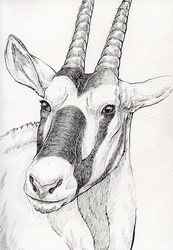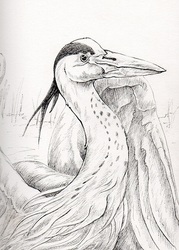Sign In
CloseToday's spirit guide is Coatimundi! In the coming time you must look after those around you rather than focusing on just yourself. This may include being generous with your time and resources. If you have been caught in a problem, call on Coatimundi for help in digging for the truth. Engage in playful, physical actions to loosen up and rid yourself of worry. If you are in a new environment or group, be willing to adapt to the circumstances and to respect that others may have a higher status than you at the moment. The Coatimundi spirit guide is known for it's connection to adaptation, generosity, acceptance, intelligence, family, finding the truth, and connecting to the physical and spiritual. Coatimundi reminds us how physical motion can connect our body and minds to a higher power. Take initiative on reaching your goals rather than expecting things to happen without any work. This guide could also be reminding you to turn to your family, particularly your mother. Allow yourself to find wisdom in unexpected place and know that you may need to search deeper if your answers are not immediately apparent. People who connect with Coatimundi have strong family connections who love to engage in social behaviors. These individuals often possess feminine energies and a great empathy for others. At times, they may step forward as leaders, but do not mind staying in a group to aid others as a team. Highly adaptable, they are known for their intelligence. If they don't know something, they will learn it.
Coatimundi, Nasua Nasua, are omnivorous mammals that can live between 8 and 15 years in the wild. A member of the raccoon family, the can be found only in the Americas from South, Central, and western North America. These animals prefer habitats of wet jungle or dense forest where it will spend much of it's life up in the trees. However, certain groups of Coatimundi will even live in cold Andean mountains, deserts, or grasslands. There are 4 species of Coati: The South American Coati, the White-nosed Coati, and the eastern and western Mountain Coatis. White-nosed and South American Coati belong to the Nasua genus with the South American species living in it's name sake, South America, and the White-nosed Coati found throughout Southwestern United states, Mexico, Colombia, and Central America. The Eastern Mountain Coati can be found in Venezuela while the Western Mountain Coati lives in Colombia and Ecuador. The Cozumel Island Coati was once seen as it's own species, but later changed to a subspecies of the White-nosed Coati. The white-nosed Coati is the largest of the species, growing to up to 4 feet in length without it's tail. On average, Adult Coatis grow to 27 inches in length from their head to the base of their tail, weigh over 17 lbs, and stand as tall as 12 inches at the shoulder. These impressive tails can measure as long as their own body. Males tend to be almost twice as large as their female counterparts. The mountain species of Coatis are the smaller of the 4 species. Similar to others in the raccoon family, Coatis walk on the soles of their feet just like humans which is called plantigrade. Coati also possess ankles that can rotate 180 degrees and double-jointed appendages. These adaptations aid in their life in the trees by allowing them to climb down trees head first. The long snout and large nose of these animals gives them the nickname "Hog-nosed Raccoon" and actually is flexible enough to rotate 60 degrees in any direction. Unlike some of their relatives, though, Coatimundis are diurnal except in situations where predators, such as humans, force them to change their behaviors and become nocturnal. The diet of a Coati consists of primarily invertebrates found in forest floor debris but they will also consume fruit, tarantulas, rodents, small birds, lizards, and eggs from both birds and crocodiles. Their incredible snouts give them a sense of smell that allows them to sniff out their prey easily. Coatimundi live in groups called bands ranging between 10 and 30 individuals. These groups are built of females and their young. Adolescent males under two years will stay in these groups until becoming solitary adult males who leave the band. Bands of these families will rummage loudly across their territory foraging for food. Female Coatimundi have such strong maternal instincts that they will even find and steal food to give to offspring not their own. If provoked, these animals can be strong fighters with their sharp teeth, strong jaws, and speed. They even have a thick skin attached to muscles beneath which makes it harder for predators to grab them. Communication occurs through grunts, chirps, and snorts as well as physical actions such as social grooming, posturing, and using their tails. Male Coatimundi only return to the band in order to breed. Breeding season occurs during the rainy season when resources are easier to find. Males are accepted back into the band for breeding. Pregnant females leave the band for nests built in trees or rocky areas where they give birth to a litter of 3 to 7 kits. At around 6 weeks old, they will rejoin their family.
Submission Information
- Views:
- 2434
- Comments:
- 0
- Favorites:
- 1
- Rating:
- General
- Category:
- Visual / Traditional




